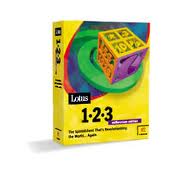| 我们致力本地化我们在尽可能多的语言的网站越好,然而这一页是机器使用谷歌翻译翻译。 | 关闭 |
-
-
产品
-
资源
-
支持
-
公司
-
登录
-
.wk4 文件扩展名
开发商: IBM文件类型: Lotus 4 Worksheet你在这里因为你有,有一个文件扩展名结尾的文件 .wk4. 文件与文件扩展名 .wk4 只能通过特定的应用程序推出。这有可能是 .wk4 文件是数据文件,而不是文件或媒体,这意味着他们并不是在所有观看。什么是一 .wk4 文件?
该.wk4文件扩展名是由IBM开发的,因为它主要用于IBM的Lotus软件之一,在Lotus 1-2-3版本4.这是属于到Lotus SmartSuite的,一套莲花电子表格程序莲花计划。这个版本的Lotus 1-2-3是另一种电子表格程序,允许用户创建和保存数据的电子表格。像所使用的早期版本的Lotus 1-2-3的文件的其余部分,这些.wk4文件也被组织成行和列,它们是存储在细胞以及文件。它们包含公式,允许用户容易且快速的计算,在细胞中显示的数据的值这就是为什么这个主要是用来进行计算。之前,这些文件可以通过Microsoft Excel中导入,但不再支持.wk4延伸存在。应用程序可以打开这些文件的Lotus 1-2-3 WK4文件转换器,Corel的WordPerfect Office办公X6,Gnumeric的,和IBM的Lotus 1-2-3。如何打开 .wk4 文件?
推出 .wk4 文件,或者你的电脑上的任何其他文件,双击它。如果你的文件关联的设置是否正确,这意味着应用程序来打开你的 .wk4 文件将其打开。这是可能的,你可能需要下载或购买正确的应用程序。这也有可能是你有正确的应用程序在PC上,但 .wk4 文件还没有与它相关联。在这种情况下,当您尝试打开一个 .wk4 文件,你可以告诉Windows的应用程序是正确的该文件。从这时起,打开 .wk4 文件将打开正确的应用程序。 点击这里修复.wk4文件关联错误打开一个应用程序 .wk4 文件
 IBM Lotus 1-2-3
IBM Lotus 1-2-3IBM Lotus 1-2-3
IBM Lotus 1-2-3 is a spreadsheet application that lets you work professionally and efficiently with numbers. You can use live Web information and perform its analysis using the Web tables. Features such as SmartFill and SmartLabels predict what you want to perform before you even type in commands. This application sets a cost-effective desktop productivity program, attends to the needs of both users and enterprise, increases employee productivity and allows exchange of documents to and from business applications. Its productivity features cover speech-enabled SmartMaster templates, Microsoft Excel compatibility, move and copy worksheets, SmartLabels, automatic SmartFill, more rows with up to 65,536 rows, Ask the Expert feature for user’s questions, Excel MenuFinder, Euro currency support, copy and paste, data validation add-in, auto save and keyboard switching. Internet integration features include Web tables, hyperlinking, HTML features, publishing assistant and HTML on clipboard. Microsoft Windows Command Prompt
Microsoft Windows Command PromptMicrosoft Windows Command Prompt
Command Prompt is the command-line interpreter supplied by Microsoft Corporation on OS/2, Windows CE and on Windows NT-based operating systems, including Windows 2000, XP, Vista, 7, Server 2003 and Server 2008. It has an executable name cmd.exe and it is the analog of COMMAND.COM in MS-DOS and Windows 9x systems or usually called MS-DOS Prompt, or of the UNIX shells used on Unix-like systems. Unlike COMMAND.COM, which is a DOS program, cmd.exe is an original Windows application generally working in Win32 console. This permits it to take advantage of features available to original programs on the platform that are otherwise unavailable to DOS programs. At first, Therese Stowell developed the initial version of cmd.exe for Windows NT. Though some old DOS commands are not supported or have been changed, cmd.exe still has a greater number of built-in commands. The cmd.exe remains an element of Windows Vista, Windows Server 2008, Windows 7, and Windows 8.提醒一句
要小心,不要重命名扩展 .wk4 文件,或任何其他文件。这不会更改文件类型。只有特殊的转换软件可以从一个文件类型更改一个文件到另一个。什么是文件扩展名?
文件扩展名是一组三个或四个字符在文件名的末尾,在这种情况下, .wk4. 文件扩展名告诉你它是什么类型的文件,并告诉Windows哪些程序可以打开它。窗户经常关联一个默认程序的每个文件的扩展名,这样,当你双击该文件,程序会自动启动。当该程序不再是您的PC上,有时可以得到一个错误,当您试图打开相关的文件。发表评论

